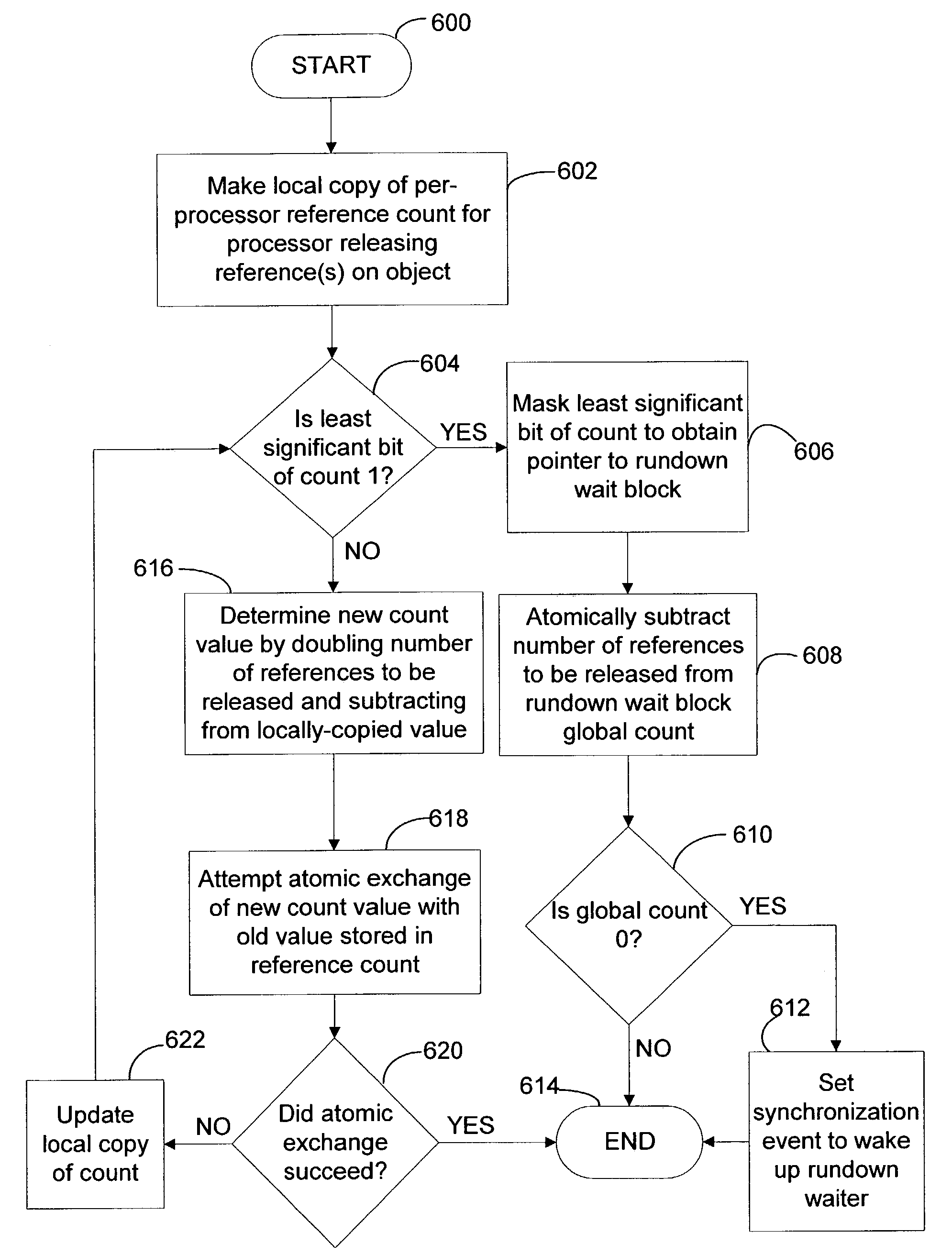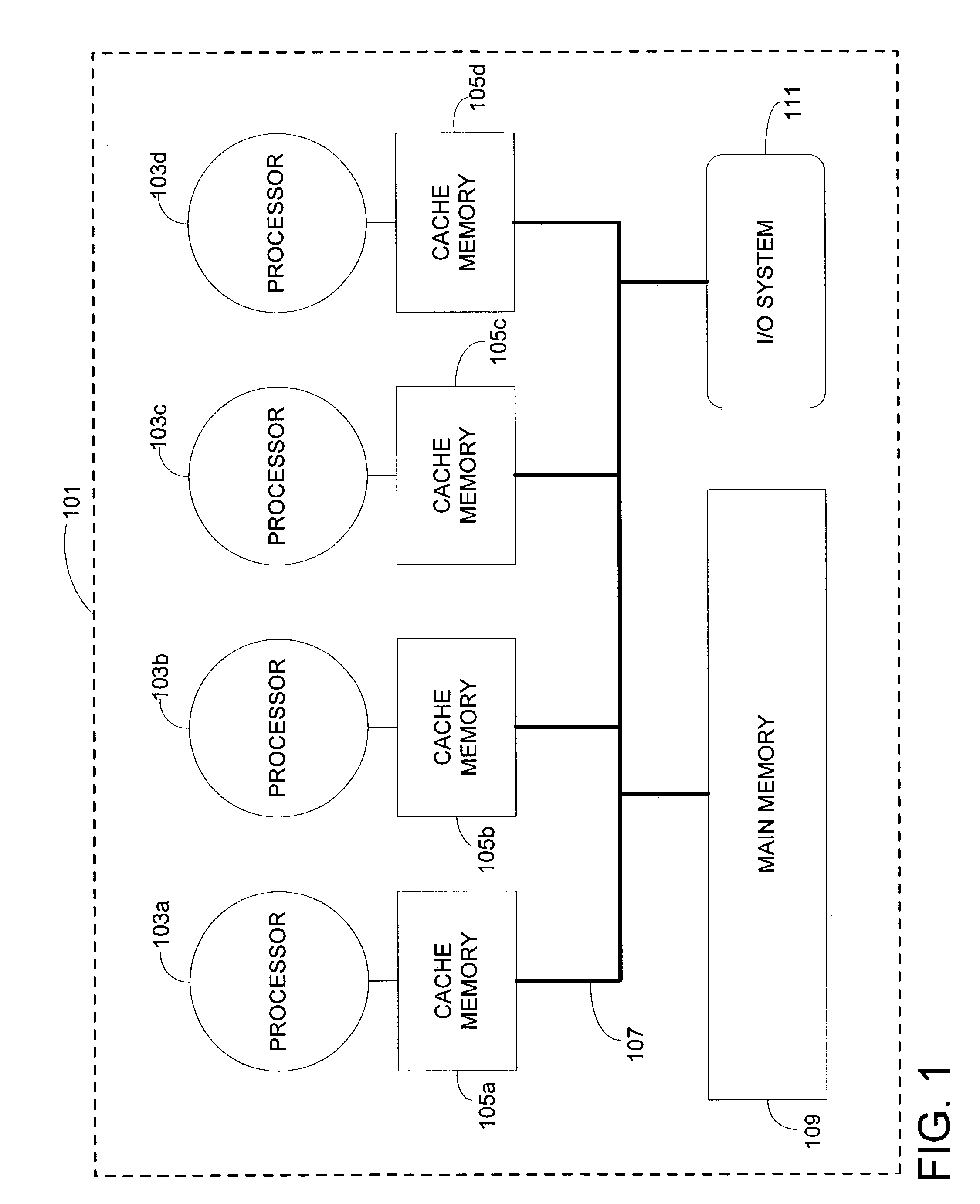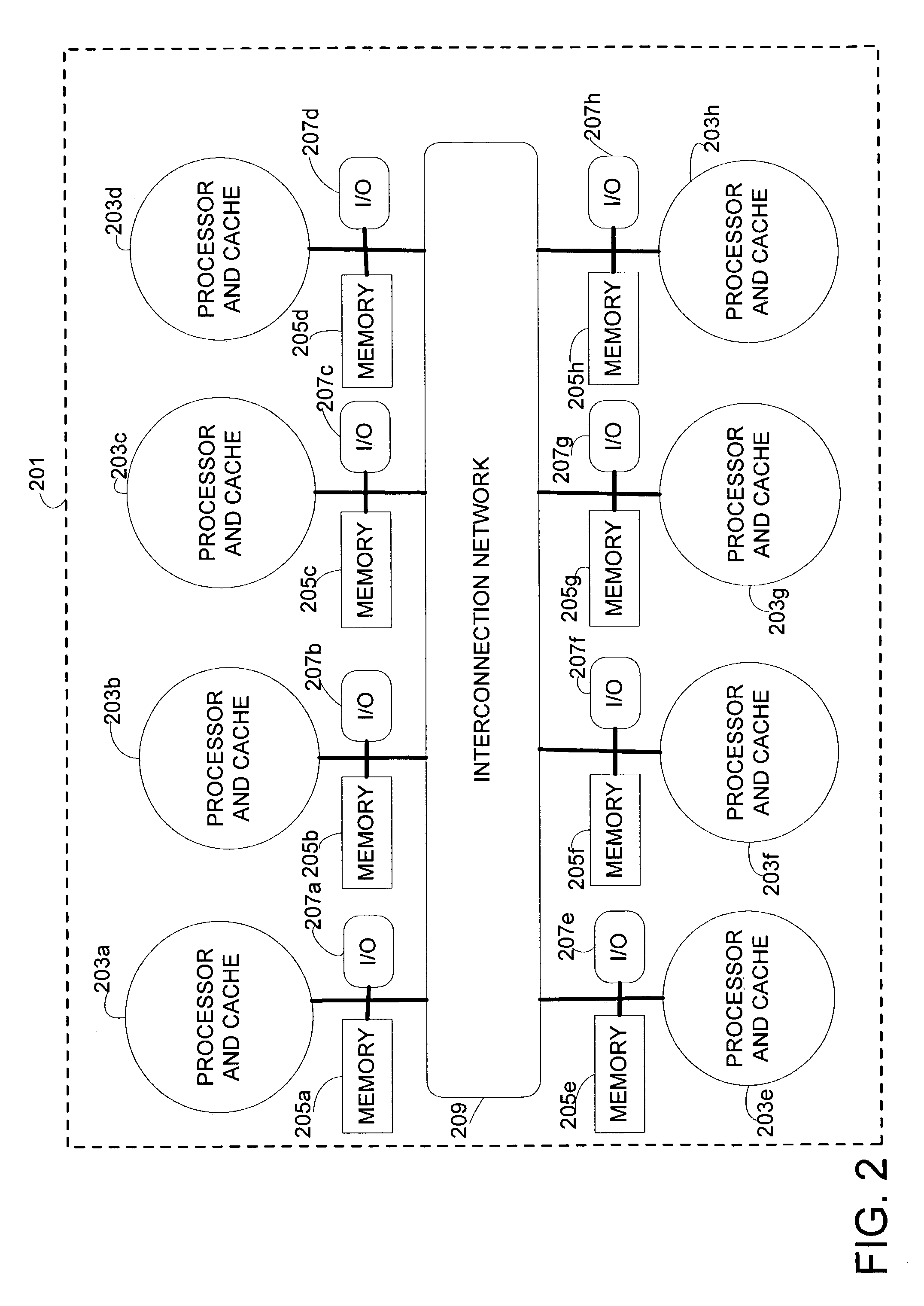Scalable rundown protection for object lifetime management
a rundown protection and object technology, applied in the field of computer systems, can solve the problems of erroneous and unpredictable program and system behavior, so-called von neumann bottleneck, and the gap between faster processors and slower memory
- Summary
- Abstract
- Description
- Claims
- Application Information
AI Technical Summary
Benefits of technology
Problems solved by technology
Method used
Image
Examples
Embodiment Construction
[0018]The present invention is directed to a system and method for protecting an object residing in shared main memory from being destroyed or rendered inaccessible while outstanding references on the object exist.
[0019]Prior to proceeding with a description of the invention, a description of representative computer systems in which the various embodiments of the invention may be practiced is provided. The invention will be described in the general context of computer-executable instructions, such as programs, being executed within a computer device. Generally, programs include routines, methods, procedures, functions, objects, data structures and the like that perform particular tasks or implement particular data types. The term “computer”, “computer device” or “machine” as used herein includes any device that electronically executes one or more programs.
[0020]Aspects of the invention described herein may be implemented on various kinds of computers, including uniprocessor computer...
PUM
 Login to View More
Login to View More Abstract
Description
Claims
Application Information
 Login to View More
Login to View More - R&D
- Intellectual Property
- Life Sciences
- Materials
- Tech Scout
- Unparalleled Data Quality
- Higher Quality Content
- 60% Fewer Hallucinations
Browse by: Latest US Patents, China's latest patents, Technical Efficacy Thesaurus, Application Domain, Technology Topic, Popular Technical Reports.
© 2025 PatSnap. All rights reserved.Legal|Privacy policy|Modern Slavery Act Transparency Statement|Sitemap|About US| Contact US: help@patsnap.com



